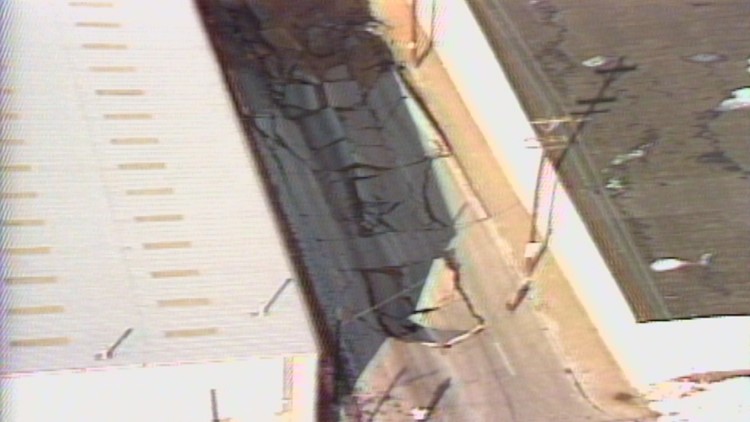Here’s a look back at the sewage explosions that struck Old Louisville and the surrounding area on February 13, 1981.
LOUISVILLE, Ky. – Where were you when the sewer blew? It’s a classic question for longtime Louisvillians referring to the 1981 sewage explosions that devastated Old Louisville and the surrounding areas.
The first sign of an error came in the early morning of February 13th. WHAS-TV had multiple crews across town when reports of damage were reported in daylight.
The city’s streets collapsed, dozens of shops and homes were irreparably damaged, and only four were injured. Nobody was killed.
“If it had happened three hours later or six hours later, I can’t imagine how many people would have been killed or safely injured. Nobody was killed – it’s hard to believe,” said Steve Duncan, chief of operations at WHAS11.
Duncan was with WHAS11 for less than a month. That day he moved with the live crew dedicated to tracking down damage and ultimately a cause.
By the end of February 13, officials announced what they believed had gone wrong.
“City officials said they believe it was hexane that caused the explosion, and we know that between 11:30 am Thursday night and 5:15 am Friday morning there was no warning of what could and did happen,” said a former former WHAS11 reporter on the air.
Investigators ultimately blamed Ralston-Purina for a local soybean processing facility that was accused of spilling 18,000 gallons of hexane into the Louisville sewer system. Officials said the leak led to a series of explosions along 13 miles of sewer pipes across the city.
“It wasn’t just minor damage, it was entire stretches of road that were just blown up. They looked like something out of a war zone,” Duncan said.
When repairs began in the days that followed, MSD employees closely monitored the city’s facility and sewer lines to obtain reliable readings.
Once peace was restored, fear subsided and the city clung to this famous saying …
“People came up with t-shirts that said where you were when the sewers blew? And they became collectibles and souvenirs,” Duncan recalled.
It would take more than a year to fix the sewers and even longer to fix the roads. Four years after the explosions, the city of Louisville passed an ordinance giving MSD the power to regulate the handling of hazardous materials like hexane in the hopes that something similar would never happen again.
“It was and is one of the biggest news events – the most disastrous news events – of my time on the network 40 years later, and I can imagine what it would be like if it happened now,” Duncan said.
The Ralston-Purina plant was demolished in 2014 after millions of dollars were paid out to residents, MSD, the city and government agencies.
PHOTOS: A look back at the 1981 Louisville wastewater explosions

► Contact the reporter Shay McAlister at[email protected]. Follow her furtherTwitter (@ WHAS11Shay)andFacebook.
► Make it easy to keep up to date on more stories like this one. Download the WHAS11 News App now. To the Apple or Android User.
Do you have a news tip? E-mail [email protected], visit our Facebook site or Twitter feed.


Comments are closed.